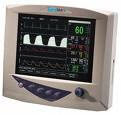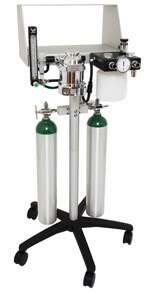Pet owners often become very nervous when I recommend a procedure that requires general anesthesia, be it a dental cleaning or removal of a mass. Though anesthesia can seem scary, at Friendship we make it as safe as possible. We take special care to ensure we are providing our patients the gold standard of care. I am very proud of our anesthetic protocols. If your pet needs surgery, but you're not able to come to Friendship, please use the following as a benchmark for state-of-the-art care.

 Once we have this information we design a customized anesthetic plan based on the overall health of the individual pet. If, for example, we discover a heart murmur during the physical exam, we will ask our in-house cardiologist to assess the patient's heart function. We then use this information to choose drugs that cause less cardiovascular depression. If we know the patient has kidney disease then we will support their kidney function with additional intravenous fluids before and after the procedure.
Once we have this information we design a customized anesthetic plan based on the overall health of the individual pet. If, for example, we discover a heart murmur during the physical exam, we will ask our in-house cardiologist to assess the patient's heart function. We then use this information to choose drugs that cause less cardiovascular depression. If we know the patient has kidney disease then we will support their kidney function with additional intravenous fluids before and after the procedure.On the day of the procedure...
Before going into the nitty-gritty, I want to point out something that I think really shows the amazing level of care we provide at Friendship: throughout the entire operation -- from the very beginning all the way through recovery -- a highly trained technician monitors every aspect of the patient's signs. This technician literally stands next to the patient throughout the entire procedure, making sure that every parameter is exactly where it should be.
At the beginning of every surgery, the very first step is to place an intravenous catheter. This will be used later in the procedure for a number of crucial functions throughout the anesthetic process. Next we administer the “pre-meds” -- these usually include a sedative to calm the patient down and an opoid to get a jump-start on pain. Thanks to the pre-meds, we are able to drastically reduce the amount of gas anesthetic that is used. This is desirable because higher quantities of gas anesthesia may cause cardiovascular depression, in which the heart rate slows and blood pressure plummets, depriving organs of much of the blood they need.
 Once the patient is fully sedated, we use the intravenous catheter we placed at the beginning of the procedure to administer powerful anesthetics called "induction drugs." These drugs completely relax the patient's throat, so that we are able to painlessly insert an endotracheal tube -- known for short as an ET tube (pictured above). We use the ET tube to administer gas anesthesia, and also to help keep the patient breathing freely.
Once the patient is fully sedated, we use the intravenous catheter we placed at the beginning of the procedure to administer powerful anesthetics called "induction drugs." These drugs completely relax the patient's throat, so that we are able to painlessly insert an endotracheal tube -- known for short as an ET tube (pictured above). We use the ET tube to administer gas anesthesia, and also to help keep the patient breathing freely. With the ET tube in place, gas anesthesia is turned on and the patient is now officially under general anesthesia. As soon as the ET tube is placed, we begin tracking the patient's heart rate and blood oxygen levels using a device called a pluse-oximetry machine, which is placed on the patient's tongue. We also apply ECG leads to monitor the rhythm of the patient's heart. It is critical to monitor blood pressure constantly during anesthesia. This allows us to ensure that the patient's organs are receiving an adequate supply of blood. One of the many reasons IV fluids are administered during surgery is to maintain blood pressure.
With the ET tube in place, gas anesthesia is turned on and the patient is now officially under general anesthesia. As soon as the ET tube is placed, we begin tracking the patient's heart rate and blood oxygen levels using a device called a pluse-oximetry machine, which is placed on the patient's tongue. We also apply ECG leads to monitor the rhythm of the patient's heart. It is critical to monitor blood pressure constantly during anesthesia. This allows us to ensure that the patient's organs are receiving an adequate supply of blood. One of the many reasons IV fluids are administered during surgery is to maintain blood pressure.Though there is always some risk when going under general anesthesia, here at Friendship we do everything we can to make it as safe as possible. Certainly, general anesthesia should be respected, but please don’t let fear keep you from moving forward with a procedure that will benefit your pet's health.










No comments:
Post a Comment